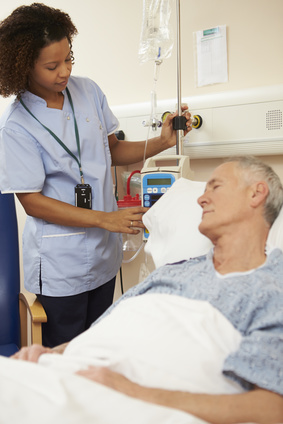
When I recently asked many of the new nurses in our hospital their feelings as they started their first position, would it surprise you that they all shared similar feelings of:
- Being overwhelmed
- Anxious
- Fearful
- Thankful at the end of the shift that they did not harm or kill their patients!
If you are a graduating or new nurse and can identify with these feelings, know that you are not alone!
Reality shock awaits new graduate nurses who have passed the NCLEX®, but will soon find themselves overwhelmed and unprepared in the clinical practice setting.
Though every graduate nurse will experience reality shock at some level as they begin their first position, there are strategies that students can be taught that will help them successfully and smoothly transition to real-world practice.
Today, I will discuss how to develop and create a personal patient prep sheet that will simplify clinical data collection and capture the essence of clinical reasoning so students are well prepared for professional practice.
Clinical Prep vs. Patient Prep
When students begin a nursing program, clinical and patient preparation is dictated to them as novice nurses by the required clinical paperwork for that semester and clinical setting.
Unfortunately, many programs struggle with TMI not only in the curriculum but also in the amount of clinical prep! (see past blog on why TMI hurts student learning)
This weakens student learning in two ways.
- As concrete learners, students see all clinical data as equally relevant and are unable to distinguish between what is most and least important.
- When too much information is present, they acquire only a superficial level of learning but not the DEEP learning of what is MOST important so it can be applied to the bedside.
Prepare Students for Practice
In order to successfully transform nursing education and better prepare students for real-world clinical practice, stay focused on this objective.
The purpose of everything that is done in nursing education is to do one thing… prepare students for practice.
Knowing that students will be caring for multiple patients after graduation, clinical prep must reflect the essence of the priorities that are needed to quickly and concisely assume patient care.
As a student progresses through the program, opportunities should be provided for students to create their own data collection prep sheet.
Do this and your students will have a foundation that will prepare them well for bedside practice after the NCLEX®.
Components of Patient Prep Worksheet
I have observed as a nurse in practice that clinical patient prep sheets are as unique as each nurse, no two are exactly alike!
But there are key components that they share.
I have my own patient prep sheet that has served me well over the years and have included as a complementary download in this blog so you can visualize this tool and adapt for yourself as a student or educator.
These are the key components of a patient prep sheet that I created:
- Schedule day. Hour-by-hour planning of the day to schedule meds, treatments, labs or any nursing interventions.
- Nursing assessment comparison table. The table below the schedule has two rows of body system assessment data. The first row is what the nurse collects from the chart as part of patient prep or writes down from the nurse-to-nurse report. The row below is what the nurse writes down after assessing the patient. This provides for a quick comparison of data to identify any TRENDS that may be a clinical concern.
- Kardex data. The bottom section contains basic Kardex data such as diet, activity, code status etc. to ensure safe practice.
- Clinical reasoning questions. On the reverse side of this worksheet are 12 sequential clinical reasoning questions I developed that provide the essence of what a nurse needs to know and how to think to provide safe care.
Integrate Clinical Reasoning
Clinical reasoning must be emphasized to transform nursing education, so highlight how clinical reasoning is incorporated into this patient prep sheet to strengthen their ability to more like a nurse (See past blog on additonal ways to strengthen nurse thinking).
For example by comparing the assessment data and clinical lab values of the most recent to current, this identifies clinical TRENDS to determine the direction the patient is heading. Identify SPECIFIC labs as always RELEVANT (sodium/potassium/glucose/creatinine in a BMP).
The clinical reasoning questions help guide the thinking and identify priorities as well as most likely problems or complications that the nurse must be aware of and anticipate.
In Closing
What content in your clinical paperwork is most important? Be sure that it emphasizes the essence of what a nurse needs to know to quickly and concisely collect clinical data to assume patient care. No more and no less.
Allow your students to develop their own patient prep sheets that integrates the four key components, clinical reasoning priorities and captures the essence of what is needed to be safe to assume care.
Make your clinical paperwork practical and do what is needed to not only pass the clinical practicum, but prepare them for real-world practice after the NCLEX®!
What do you think?
How have you modified your clinical paperwork so students can concisely prepare to assume care?
Comment below and let the conversation begin!
Keith Rischer – PhD, RN, CEN
As a nurse with over 35 years of experience who remained in practice as an educator, I’ve witnessed the gap between how nursing is taught and how it is practiced, and I decided to do something about it! Read more…
The Ultimate Solution to Develop Clinical Judgment Skills
KeithRN’s Think Like a Nurse Membership
Access exclusive active learning resources for faculty and students, including KeithRN Case Studies, making it your go-to resource.



